Note: Please read the article carefully before proceeding! If in the process of using you encounter any errors, such as broken download links, slow loading blog, or unable to access a certain page on the blog ... then please inform me here. Thanks!
In this article, I will share with you some very useful commands to manage user accounts on Windows operating system (Local Acconut).In fact, in the previous article, I have instructed many commands, such as creating Windows User, adding Windows User to the Admin group, setting a password for Windows, or changing a Windows password ... via the command line window CMD already.
If you have not read that article, please read it here. Certainly that article will be very helpful to you there.
In this article, I will continue to share more with you a few good and useful commands in CMD to manage Windows Users more effectively.
Read more:
And I also want to write a separate article for you to track and search more.
Okay, let's start now .... But first, please open CMD with Admin privileges first. Otherwise, it will not work.
#first. The command checks to see how many users are on Windows
At the CMD window enter the following command => and pressEnter to execute the command.net user=> Now you can see a list of existing Windows Users. As shown in the picture below, there are 2 users Administrator and KIEN there.
// Note: After executing any of these commands, if the message appears, The command completed successfully That means you have successfully executed the command.
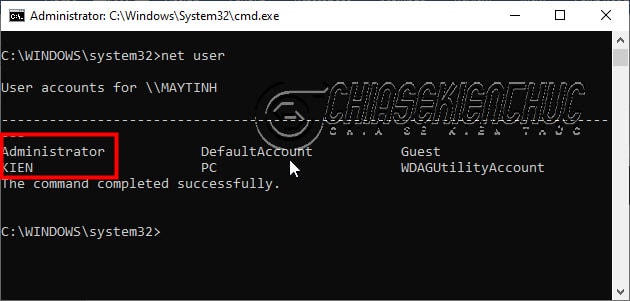
#2. Command to create a new User on Windows
With the creation of additional users, we have two options: create a user with a password, or create a user without a password.+ Case 1: Create a new User without a login password.
You use the following command => and press
Enter to perform:net user KIEN / add
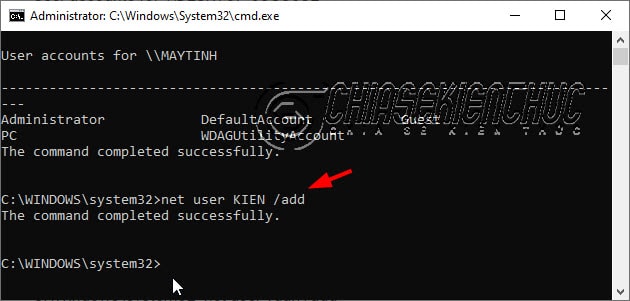
You can now check in section
Manage Accounts, a new account has been created KIEN and that.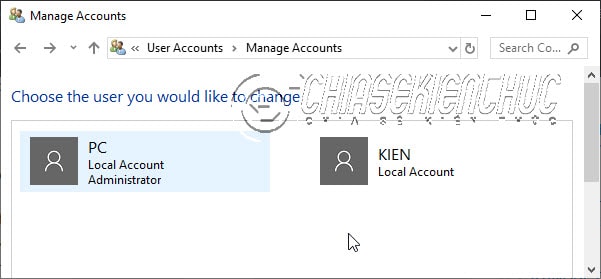
+ Case 2: Create a new User with login password. You use the following command => and press
Enter is okay.- Syntax: net user
/ add - Applied to the example we have the command: net user KIEN 123456 / add
# 3. Add a password for User on Windows
Yes, in the case above I have just created a new User User and do not have a login password.So now I want to add the password to the account just created, I will use the following command:
- Syntax: net user
"Password" - Applied to the example we have the command: net user KIEN 1234
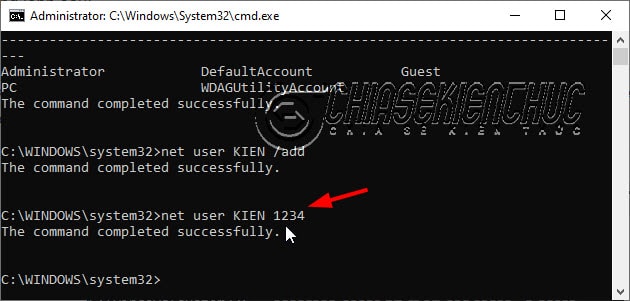
# 4. Delete the password or replace the password for the User with the command in CMD
So, a question posed with the above case 2, that is now I want to change the password for the Windows User, what should I do?You use the following command => and press
Enter to perform:- Syntax: net user
* - Applied to the example we have the command: net user KIEN *
Type a password for the user, and retype the password into the line Retype the password...// Note: Note that when you enter the password, you will not see it appear because to ensure security, but you just enter it, enter it correctly.
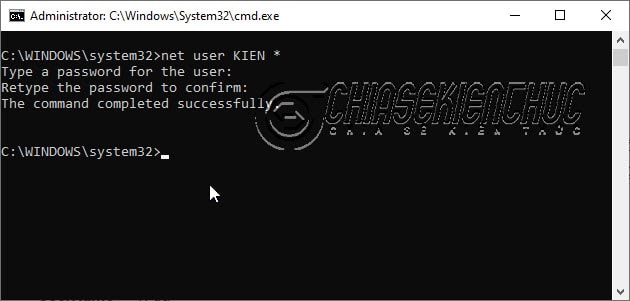
In case I want to remove the password of that User account, I will use the following command:
- Syntax: net user
"" - Applied to the example we have the command: net user KIEN ""
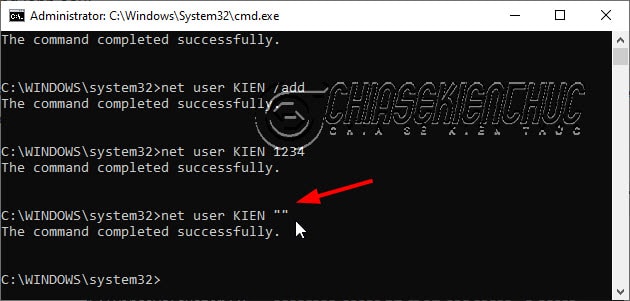
# 5. Add the User to the Administrator administrative group
In case you want to delegate this User isAdministrator then run the following command:- Syntax: net localgroup administrators
/ add - Applied to the example we have the command: net localgroup administrators KIEN / add
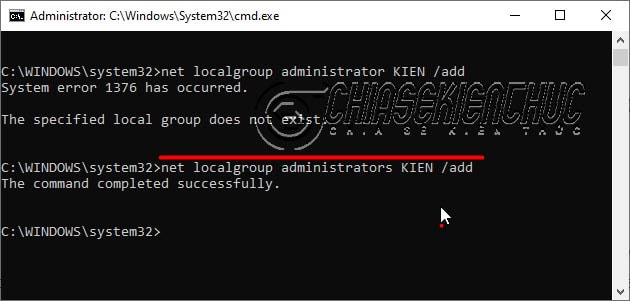
# 6. Temporarily turn off the User account on Windows
- Syntax: net user
/ active: no - Applied to the example we have the command: net user KIEN / active: no
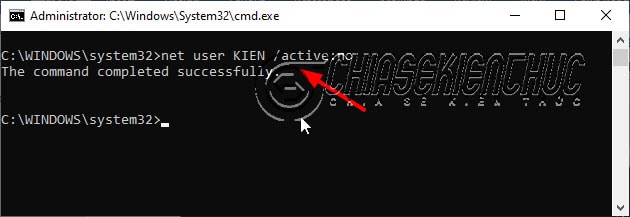
In contrast, to reactivate the User, you use the following command:
net user KIEN / active: yes
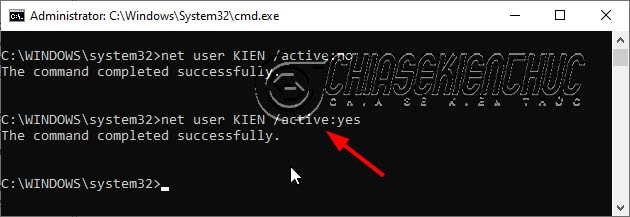
# 7. Command to delete Local User account on Windows
If you do not want to use a particular User, and you want to delete them, do the following- Syntax: net user
/ del - Applied to the example we have the command: net user KIEN / del
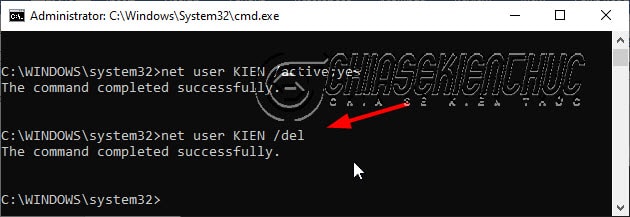
#8. Delete the entire command in the CMD window
Yes, if your CMD window has too many lines, you can clean them up with the following command:cls
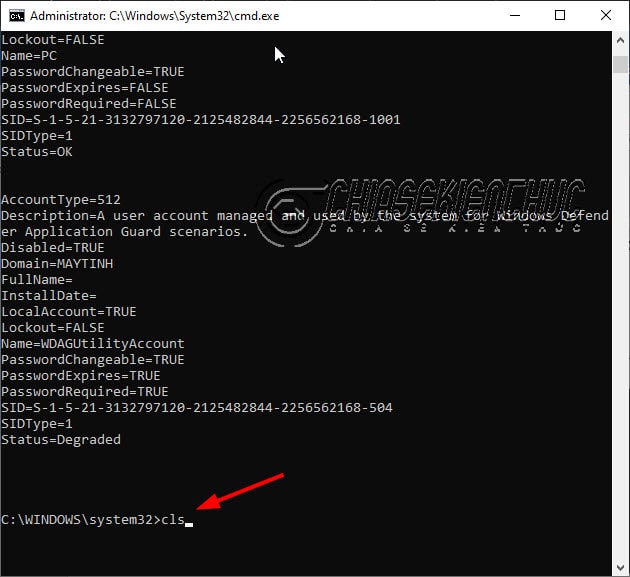
# 9. Epilogue
Okay, these are the most commonly used commands User management on Windows with the CMD command. In addition to the commands that I have just shared above, if you know any more, do not hesitate to share below so that you can learn more.Hope this article will be helpful to you, wish you success!
Kien Nguyen - Blogchiasekienthuc.com





Post a Comment
Post a Comment